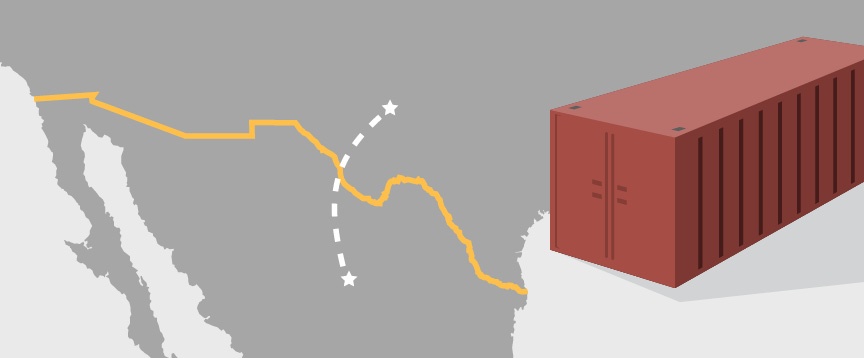
Thousands of shipments move across the US/Mexico border every day. Crossing any border is complex, but when you add multiple hand offs and compliance requirements, things have the potential to get really bogged down. Reduced visibility, increased costs, and failed compliance are all at risk.
Take a minute and learn about what makes a US/Mexico border crossing so complicated.
There are a lot of variables that make up a shipment, such as origin, destination, scale, shipping processes, documentation, and more.
In a southbound shipment, everything stops before the border and a third party transports the goods to the border. They are then physically inspected to confirm 100% accuracy of the documentation. Quantity, description, country of origin, tariff classification, and labeling requirements are all checked.
The major difference for northbound shipments is that documents must be provided at the time of shipping. It is critical to use transit time to complete the Mexican export and US import documentation.
There are challenges to overcome whether the shipment is heading north or south.
Multiple parties, different reporting processes, and compliance requirements. This means more touch points, more gaps in communication, and more places for things to go wrong.
Depending on your focus, any one issue could be a huge concern. Border crossings can be referred to as the “Black Hole”- information goes in and nothing comes back out.
Any of these things could put a customer’s supply chain at risk and the MEX/US border has them all. It’s a lot to manage.
Handling cross-border freight in this region tends to have three major pitfalls.
- A deficiency of infrastructure on both sides of the border: This creates reliance on information from service providers for things like shipment visibility and entry detail reports.
- A deficiency specialized or dedicated personnel: There are many subtle, intricate details to manage. Without knowledge and experience this can result in inaccurate or untimely data.
- Companies lacking integrated systems or automated communication: This makes optimization extremely difficult and opens a customer up to tremendous risk when it comes to compliance.
Freight crossing almost any border has a lot of hoops to jump through and can provide challenges. Trading environments are also always evolving (e.g. Brexit), so it is important to have a logistics partner that can assist with compliance, mitigate risk, and reduce your costs.






